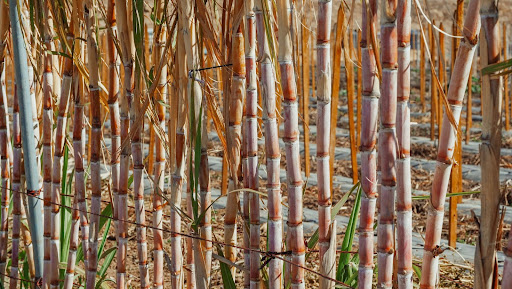People researching beet sugar vs cane sugar often want to know which mixes easily in beverages.
People researching beet sugar vs cane sugar often want to know which mixes easily in beverages.
Blog Article
Discover the Uses and Advantages of Beet Sugar Vs Cane Sugar in Your Daily Diet Plan
Exploring the distinct high qualities of beet and cane sugar reveals greater than just their sweetening capacities; it highlights their distinct effect on wellness and cookeries. Beet sugar, known for its subtle flavor, is usually preferred in fragile treats, whereas cane sugar, with its hint of molasses, adds richness to robust meals. Each type holds its own nutritional profile and glycemic implications, welcoming a much deeper understanding of their roles in a well balanced diet regimen and lasting intake techniques.
Origin and Manufacturing Processes of Beet and Cane Sugar

The unique climates and dirt kinds required for expanding sugar beetroots and sugarcane add to distinctions in their growing practices and geographical circulation, influencing the business economics and sustainability of their manufacturing. beet sugar vs cane sugar.
Nutritional Comparison In Between Beet Sugar and Cane Sugar
In spite of originating from various plants, beet sugar and cane sugar are nutritionally extremely similar, both mostly containing sucrose. Each provides regarding 4 calories per gram, equating to approximately 16 calories per tsp. Structurally, both sugars are made up of approximately 99.95% sucrose, with marginal amounts of various other substances like wetness and trace minerals, which do not significantly change their nutritional accounts.

Ultimately, when selecting in between beet sugar and cane sugar based on dietary content alone, both deal identical advantages and downsides as they are basically types of the very same molecule-- sucrose, giving quick energy without various other nutrients.
Effect On Wellness: Glycemic Index and Caloric Material
Discovering further into the effects of beet sugar and cane sugar on health and wellness, it is very important to consider their glycemic index and calorie web content. Both sugars are identified as sucrose, which includes glucose and fructose. This composition leads them to have a similar impact on blood sugar levels. The glycemic index (GI) of both beet and cane sugar is around 65, classifying them as high-GI foods, which can create quick spikes in blood sugar degrees. This a fantastic read is a vital element for individuals handling diabetic issues or those trying to support their power degrees throughout the day.
Each kind of sugar contains about 4 calories per gram, making their calorie material equivalent. For those monitoring caloric intake, especially when handling weight or metabolic wellness conditions, recognizing this equivalence is crucial (beet sugar vs cane sugar). Nonetheless, too much intake of any type of high-calorie, high-GI food can add to health concerns such as excessive weight, heart illness, and insulin resistance.
Environmental and Economic Considerations of Sugar Manufacturing
Beyond health and wellness impacts, the manufacturing of beet and cane sugar also elevates significant ecological and economic problems. Sugar beet growing tends to call for cooler climates and has a lower geographical impact compared to sugar cane, which prospers in tropical regions. Nonetheless, both crops are extensive in terms of water usage and land line of work, potentially bring about deforestation and water deficiency. Economically, the international sugar market is very volatile, affected by changes in global profession plans and aids. Numerous nations incentivize sugar production with financial backing, skewing market value and influencing small farmers negatively.
Additionally, using pesticides and fertilizers in both beet and cane sugar growing can cause dirt deterioration and air pollution, more influencing biodiversity and neighborhood water bodies (beet sugar vs cane sugar). The selection in between growing sugar beet or cane this link frequently depends upon local environmental problems and financial variables, making the sustainability of sugar manufacturing an intricate problem
Culinary Applications and Taste Differences
While the environmental and economic facets of sugar production are without a doubt substantial, the option between beet and cane sugar also influences cooking applications and flavor profiles. Beet sugar, derived from the sugar beet plant, is understood for its incredibly neutral taste. This makes it a versatile active ingredient in cooking, where it does not change the flavor of various other elements. It dissolves quickly and is excellent for usage in cakes, go right here cookies, and pastries.
Walking cane sugar, extracted from sugarcane, usually retains molasses traces, which pass on an unique splendor and deepness. The minor variant in dampness material in between beet and cane sugar can influence the structure and uniformity of meals, making cane sugar a favored selection for details dishes that profit from its unique residential properties.

Conclusion
To conclude, both beet and cane sugar have unique origins and production processes, offering comparable dietary profiles with minor distinctions in sodium content and flavor. While their effect on wellness, especially relating to glycemic index and calories, is comparable, the choice between them typically comes down to ecological, financial elements, and particular cooking requirements. Comprehending these aspects can lead customers in making informed choices that line up with their health objectives and flavor preferences.
Report this page